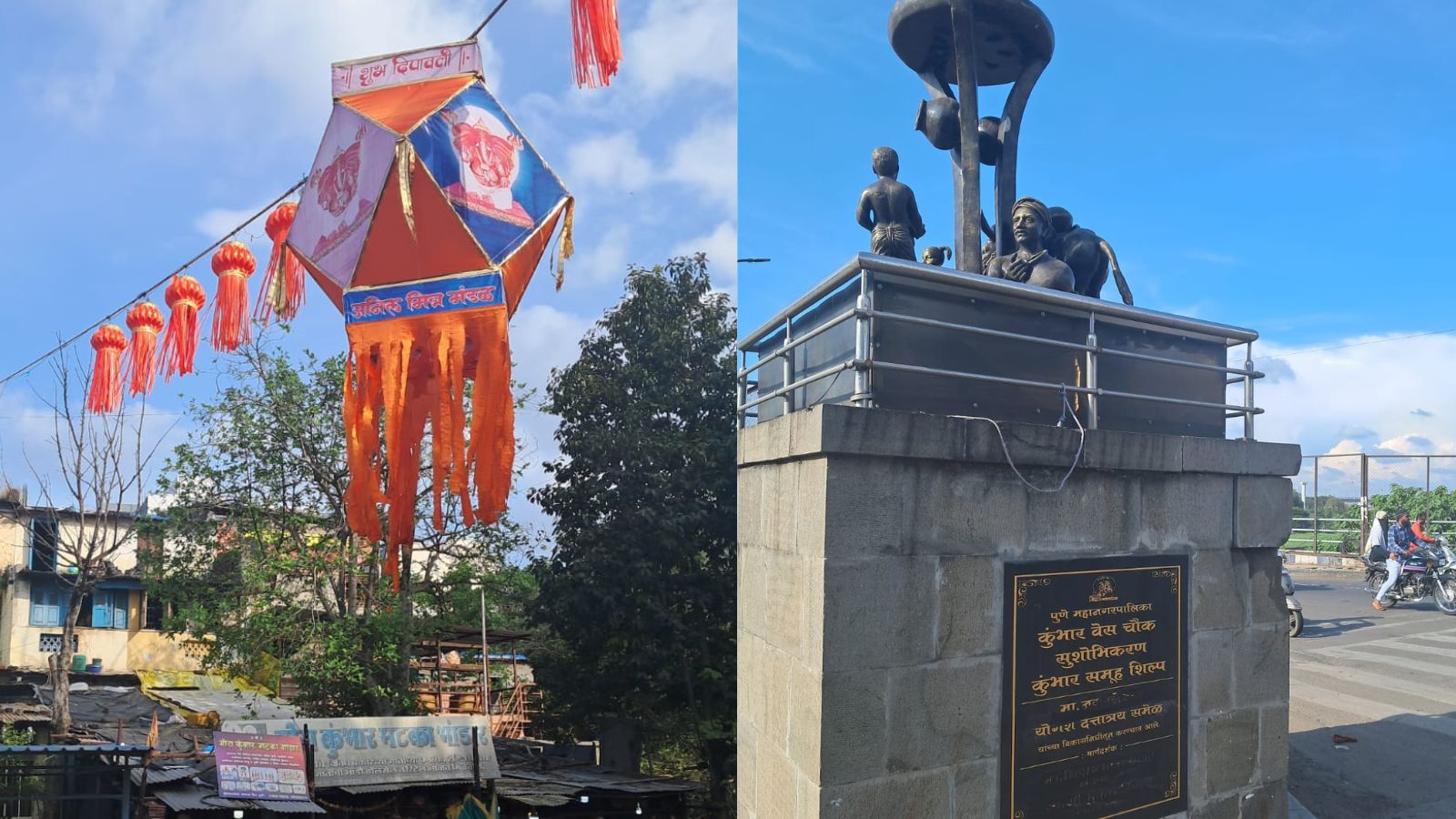Click here to join Express Pune WhatsApp channel and get a curated list of our stories
Hidden Stories: How Kumbharwada and Dengle Bridge forge a link between Pune’s history and Diwali celebrations
Not many in Pune may be aware of the significance of Kumbharves and its name but the area in Kasba Peth has enduring ties with the city’s history.
 The journey to Kasba Peth to shop for traditional Diwali items like lanterns, diyas, and other ornamental goods involves crossing the old Dengle Bridge. (Express photo)
The journey to Kasba Peth to shop for traditional Diwali items like lanterns, diyas, and other ornamental goods involves crossing the old Dengle Bridge. (Express photo)For many in Pune, a trip to Kumbharwada, one of the oldest markets in the city, is mandatory before Diwali. The journey to Kasba Peth to shop for traditional Diwali items like lanterns, diyas, and other ornamental goods involves crossing the old Dengle Bridge. Yet, few may be aware of the historical background of this bridge or the nearby Kumbharves Chowk.
On the road leading to Kasba Peth from the bridge, immediately on the right, is a Hanuman temple. This is the Hanuman of Kumbharves, a word that refers to the main gate or ves of Pune and the potter community that made the area its home.
“For the new generation, even reading this name will not bring much clarity and that is understandable because there are no visible remains of any structures that could be called a ves. Yet, this place and its name hold at least 500 years of historical significance…,” writes author Avinash Sowani in Harvelele Pune, his book on the city’s history.
Chequered history
The history of the ves begins with Alauddin Khilji of Delhi who seized Pune during his 13th-century military assault in southern India. Bada Arab, one of his officers, erected the Kille Hissar fort in Pune, also known as Pandhricha Kot.
When the Nizam Shahi dynasty merged territories such as Kumbhari, Kasari, and Punewadi to form Kasba Pune, a fortification wall with three doors known as ves was built around this hamlet. One of these entrances was located on the banks of the Mutha River. After the abundance of space and water drove the ceramic-making community, Kumbhar-Kumbhakar, to settle near the riverbank, the door came to be known as Kumbharves.
“Determining the exact year when the fortifications or gates were built is almost impossible due to the lack of records. References to these gates frequently appear in documents, especially during the Peshwa era. From these records, it can be inferred that the fortifications were likely built in the latter half of the 16th century,” adds Sowani.
Around 1630 AD, in the conflict between the Adilshahi and Nizamshahi kingdoms, Bijapur’s commander Murar Jagdev launched a devastating attack on Pune, destroying the entire village, including its fortifications, gates, homes, and mansions. Kumbharves managed to survive, somewhat, with the remains of the gate lasting till the end of the Peshwa era.
“During the Nizamshahi period, a stone dam was constructed on the Mutha River near Kumbharves. Although the exact date is unknown, it remained intact until the end of the Peshwa era. The dam also served as a bridge and was called the Kumbharves Dam or Dagdi Pul (Stone Bridge). Until 1761, during the Peshwa era, this was the only way to cross the Mutha River. It was only when Nana Saheb Peshwa built the Lakdi Bridge (lakdi pul) that another route became available,” writes Sowani. He adds that in 1798, Peshwa Bajirao II ordered the repair of this dam.
 Few may be aware of the historical background of this bridge or the nearby Kumbharves Chowk. (Express photos)
Few may be aware of the historical background of this bridge or the nearby Kumbharves Chowk. (Express photos)
The British recognised the importance of the Kumbharves Dam and widened it in 1835. The original construction was fortified with new techniques, including arches. At that time, the road was widened – and the remaining parts of the Kumbharves gate were demolished.
New bridges and old ties
“In 1970, the Pune Municipal Corporation built a new Dengle Bridge above the old stone bridge, improving traffic flow. However, the height of the road leading to Kasba increased significantly. Around the same time, a wide road was constructed connecting the new bridge to the Dengle Bridge, eventually merging with the Sangam Bridge road. This made Kumbharves Chowk a prominent junction,” Sowani states.
“The calm atmosphere of Kasba Peth was lost due to the heavy traffic on this new road. There were plans to completely demolish the old stone bridge but so far, that has not happened. If it had, Pune’s ancient heritage would have been completely forgotten,” he adds.
According to an official Pune Municipal Corporation (PMC) statement, “On the west side of the existing Dengle Bridge, a new bridge of 162 metres in length and 24 metres in width was planned, with four piers and five spans. The design included two carriageways, each 7.5 metres wide, alongside cycle tracks and footpaths. The proposed bridge featured tee-shaped girders of 45.50 meters in length across three spans, with decorative steel structural trusses along the sides of the footpath and cycle track. Upon completion, this bridge would reduce the traffic load on Dengle Bridge.”
A new and wider bridge named Chhatrapati Shahu Setu was built and inaugurated on June 7, 2019.
Today, the potters’ community in Kumbharwada has moved its manufacturing to Mundhwa, where most production takes place. The traditional potter’s wheel has been replaced with an automatic wheel, and the age-old Kumbhar community is in decline.
Pune residents, however, continue to visit Kumbharwada, especially during festivals like Diwali – and the bridges keep humming with traffic.
Click here to join Express Pune WhatsApp channel and get a curated list of our stories







